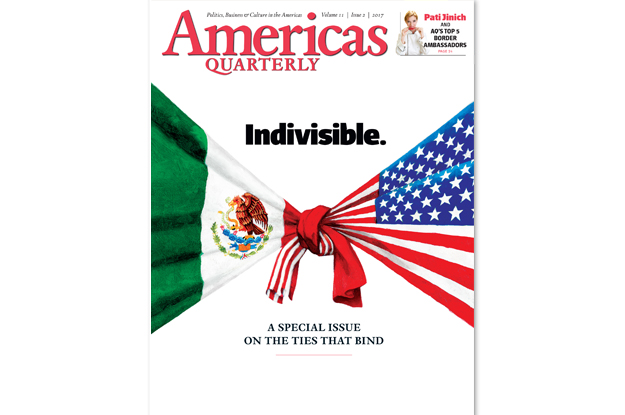Let’s start with a simple truth:
The closer you get to the border, the better Mexicans and Americans understand each other.
That’s true whether you’re a Republican or Democrat, whether you’re priista or pro-AMLO. It’s why 86 percent of Americans living in border cities said in a poll last year they like their neighbors. It’s why 79 percent of Mexicans said the same. It’s why not a single member of the U.S. Congress who represents territory along the border currently supports funding for a new wall. It’s why 61 percent of Texans – yes, red-state Texans – say they oppose a new barrier as well.
These are the people who watch every day as thousands of kids in Ciudad Juárez, Mexico cross the border to attend school in El Paso, Texas; as more than 2 million Southern Californians a year take flights out of Tijuana’s airport; as $1.6 billion a day in goods and services flows back and forth; as families, businesses and friendships take root in ways that all but ignore the border itself.
People who live near the border know: the United States and Mexico are indivisible.
That’s not some warm and fuzzy platitude. Rather, it’s a real-life recognition of how closely our economies and societies have become bound together, especially over the past 25 years. The advent of the North American Free Trade Agreement (NAFTA) and a historic wave of immigration – some of it legal, some of it not – have changed both countries forever.
Yes, each country has its problems. The relationship is currently under intense – though hardly unprecedented – strain. There are a whole host of bilateral issues, from drugs and arms flows to millions of migrants in limbo, that have festered for years and demand firm action.
But those who would divide the United States and Mexico often seem to be ignoring the facts, which resonate far beyond the border region itself. Today, 11 percent of the U.S. population is of Mexican origin, although the northward flow of people actually reversed several years ago. One million Americans live in Mexico. At least 6 million American jobs depend on trade with Mexico. Roughly 40 percent of Mexican exports to the United States include U.S. components. The U.S. metro area that exports the most to Mexico is actually Detroit – more than $10 billion a year.
Pulling all those connections apart is not just undesirable – at this stage, it’s impossible. So the question should not be “How do we create new divisions?” Rather, it’s “How do we make the relationship work better going forward?”
The new issue of Americas Quarterly magazine tries to answer the latter question in a fact-based, nonpartisan way. The image on our new cover (seen above) is simple and direct, and refers to those extraordinary ties that bind. But the stories inside this issue are nuanced, packed with surprising reporting and insight from a variety of Mexican and American voices. We asked our authors to bring something new and substantial to an emotionally charged subject.
We sent Richard Lapper, a distinguished journalist formerly of the Financial Times, to the U.S. Rust Belt and a Mexican boomtown to explore how NAFTA has affected places far from the border itself. What he found was complicated, neither a vindication of the status quo nor a pessimistic take on where the relationship is headed.
We also present AQ’s Top 5 “border ambassadors,” people who have performed outstanding work bringing the United States and Mexico closer together. We published a personal essay by one of them, Alfredo Corchado, about how many citizens who are from the border see recent controversies differently than people in Washington or Mexico City.
I would like to acknowledge that this issue has a hole: It lacks a voice from the Trump administration. We made enquiries in Washington, but partly because we began putting this issue together in early January, we were told no one was yet available to address these topics for us. We hope to publish their perspective soon online, or in a future print issue.
One of our mantras here at AQ is “Illuminate, rather than inflame.” You don’t hear that a lot in today’s media world, but we hope it has produced a rich, informative issue that adds to the debate. As always, I look forward to hearing your feedback at the email below.
Saludos and best regards
Brian Winter,
Editor-in-Chief
brian@as-coa.org






